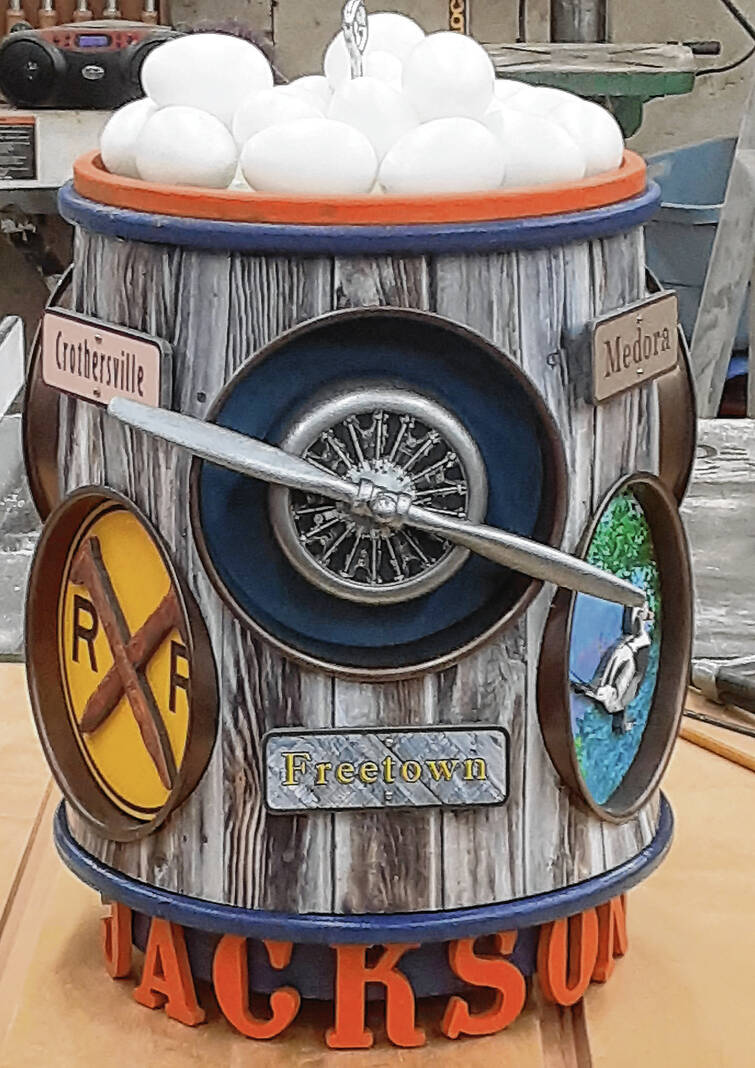
Brian Johnson of Nashville created the Jackson County ornament for the Indiana State Museum’s 92 County Tree.
Submitted photo
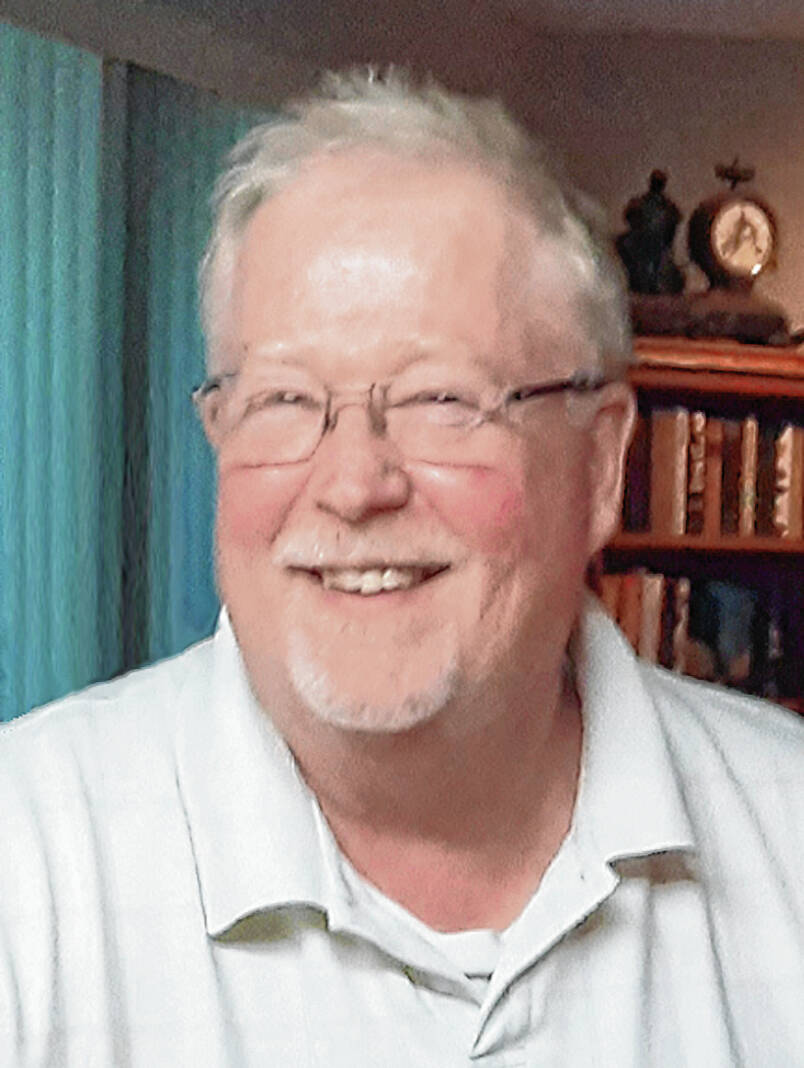
Johnson
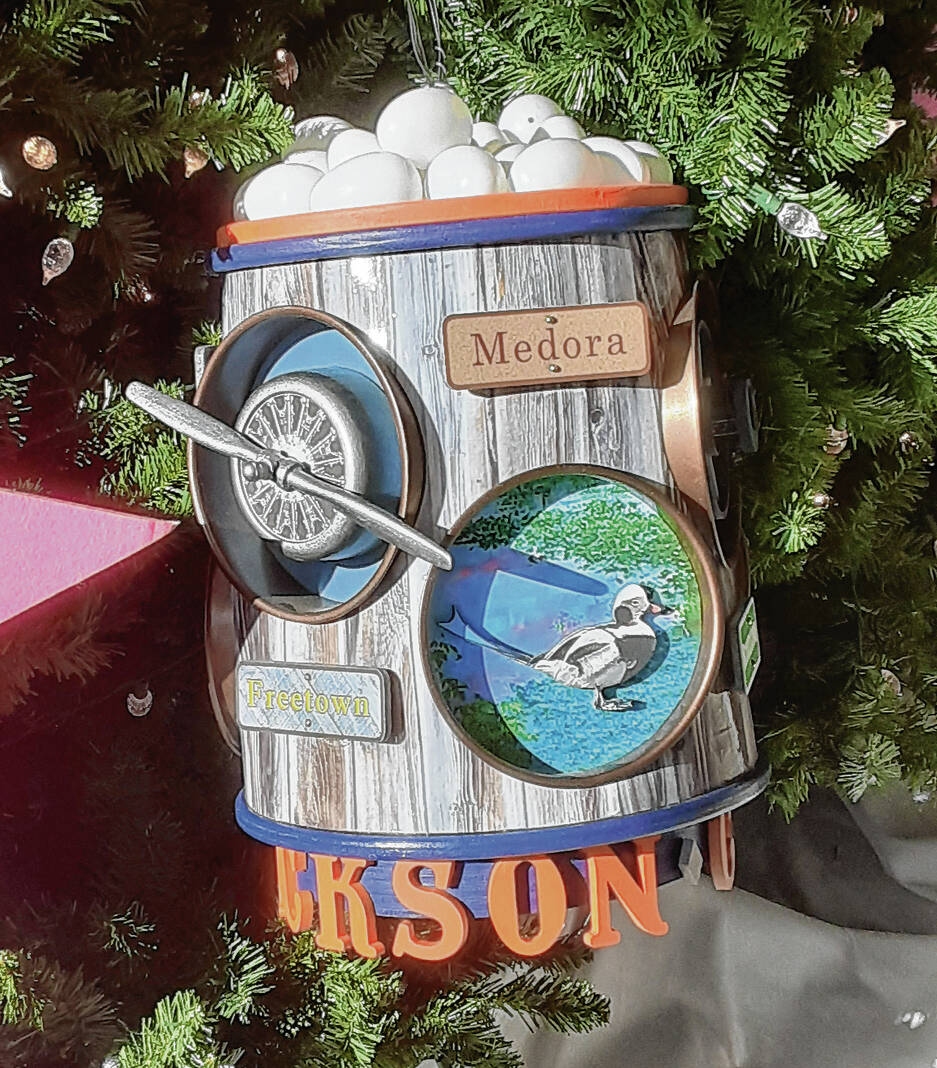
Jackson County’s ornament created by Brian Johnson of Nashville hangs on the 92 County Tree inside the Indiana State Museum in Indianapolis.
Submitted photo
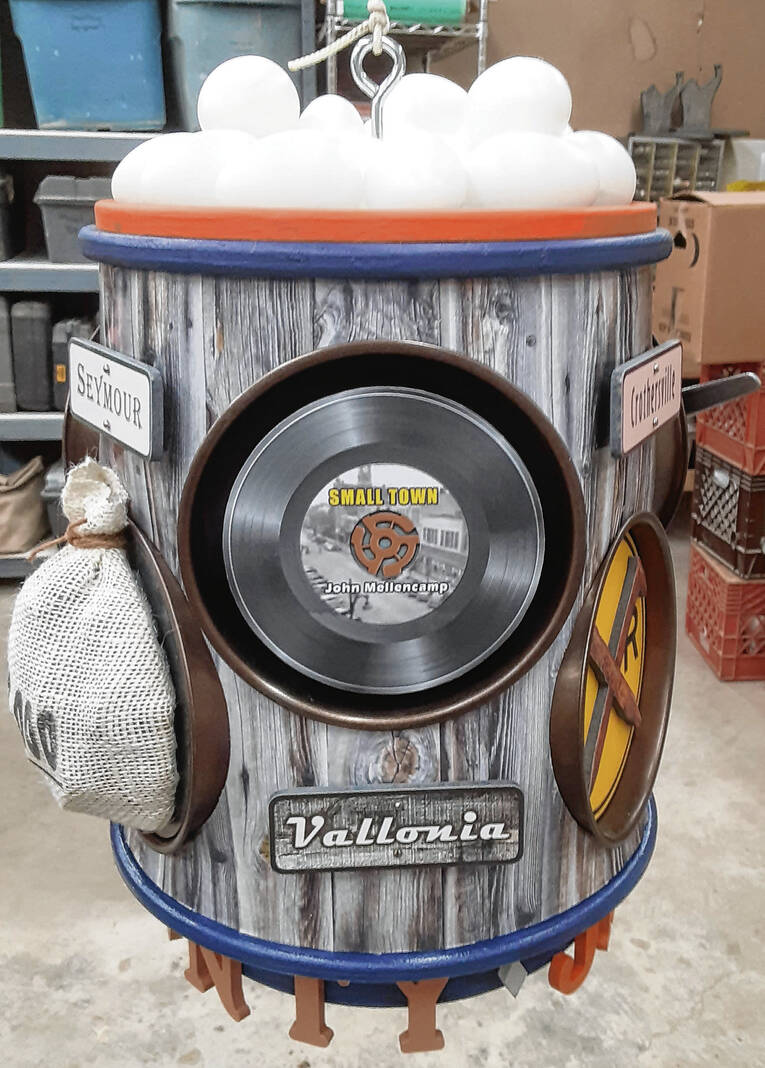
Six local communities are named on the Jackson County ornament for the Indiana State Museum’s 92 County Tree.
Submitted photo
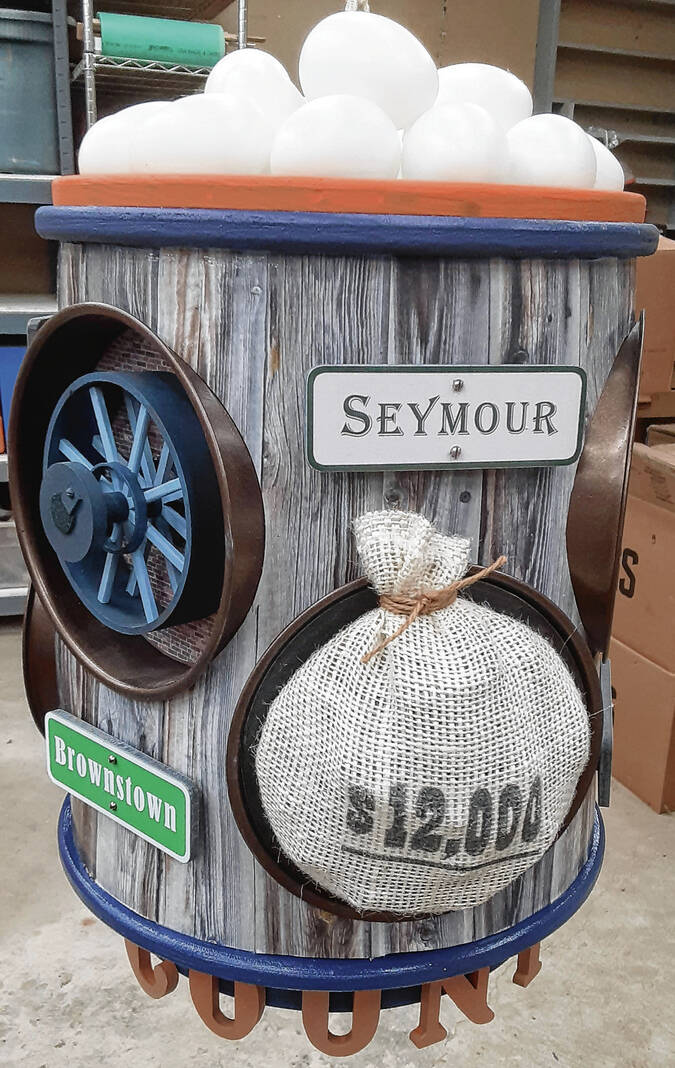
A barrel-shaped ornament created by Brian Johnson of Nashville provides six windows into Jackson County.
Submitted photo
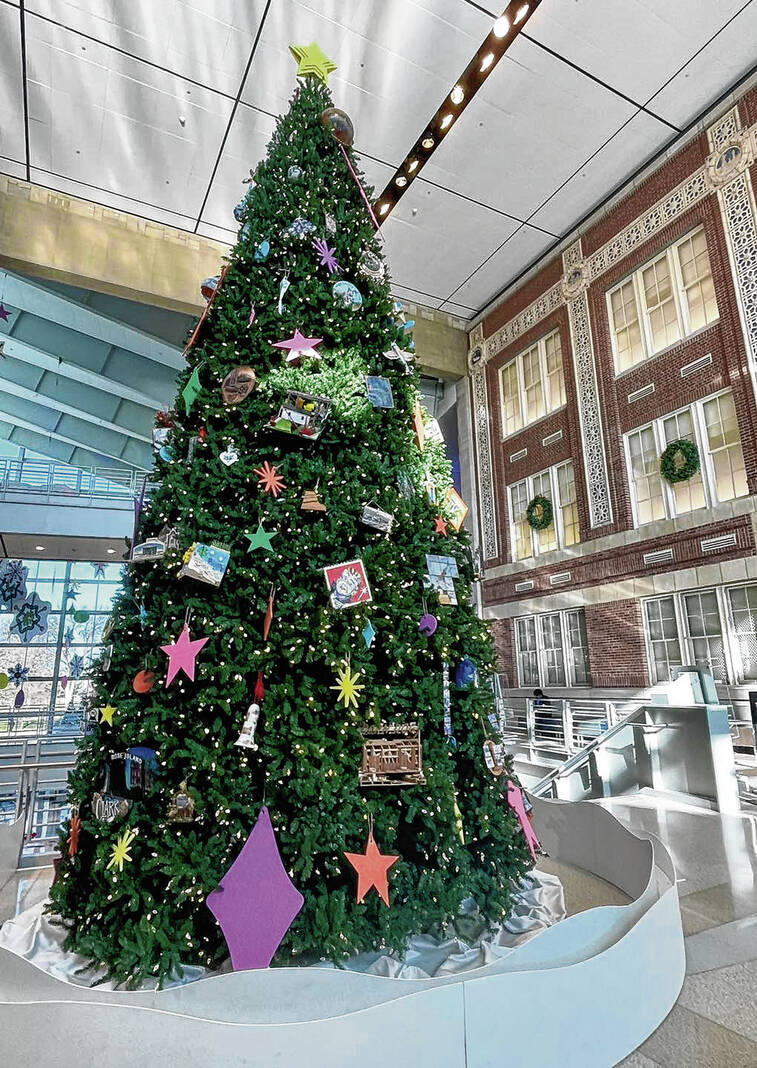
The 92 County Tree stands two stories tall inside the Indiana State Museum in Indianapolis.
Submitted photo
Brian Johnson was asked by a coworker at the Indiana State Museum to design Jackson County’s ornament for the 92 County Tree.
Having originally lived in Fishers before moving to Nashville about two years ago, he and his wife decided to travel to the Seymour area and stopped by Muscatatuck National Wildlife Refuge.
“It was fantastic,” said Johnson, lead scenic fabricator at the museum in Indianapolis. “We just had a great time there, so that’s my only really association with Seymour at first.”
As he continued his research, he said he was shocked at how many cool things are in Jackson County.
From the refuge seeing about 250 bird species per year to Rose Acre Farms being one of the top egg producers, Johnson learned a lot that he could incorporate into the ornament.
As he was designing it, he noticed three of the elements lent themselves to a circle: The railroad crossing, the Blish Milling Co. flywheel and the bag of money (representing the Reno brothers carrying out the country’s first train robbery).
“I wanted to see what I could fit into a circle format and then ended up making a ring with those round windows inset into them,” Johnson said.
The barrel-shaped ornament provides six windows into Jackson County: The junction of two major rail lines since 1852; Freeman Field, where Beechcraft AT-10 Wichita aircraft were used to train pilots during World War II; the refuge; an 1886 flywheel that powered Blish Milling Co. for 60-plus years; the first U.S. train robbery near Seymour in 1866; and the 1985 song “Small Town,” written by Seymour native John Mellencamp.
The eggs on top of the barrel symbolize Jackson County being Indiana’s sixth-largest egg producer. Plus, the names of county communities Seymour, Brownstown, Crothersville, Freetown, Medora and Vallonia are on the barrel, and Jackson County is in orange lettering around the bottom of the ornament.
Johnson said the ornament is about 18½ inches tall and 12 inches in diameter and weighs around 4 pounds, and he put nearly 40 hours of work into it.
“It turned out pretty cool,” he said. “I was hoping it would be a little bit shorter, but I couldn’t make it any more compact. The biggest difficulty was the weight. They want it to be under 5 pounds, and of course, you hang it on a tree, so you want that, but they also want it quite large, between at least 13 inches around or wide. To make it something big that doesn’t weigh very much and has some models on it, it was just hard to keep the weight down, but I got it done.”
The ornament is among 92 on a 25-foot-tall tree inside the main entrance to the museum, 650 W. Washington St. Each of Indiana’s 92 counties is represented on the tree, and Jackson County’s ornament is among 60 that are new this year. Another 32 will follow next year.
Mark Ruschman, Indiana State Museum and Historic Sites’ senior curator of art and culture, approached artists around the state throughout this year to design and make new ornaments that reflect their county to bring recognition to things that were understated about the county or of interest to the artist.
“The response has been great,” he said. “The artists like the challenge, but also, they’re honored to be considered for this project in the first place. They take a great deal of pride in the fact that their piece is going to be hanging on the museum’s tree.”
A digital kiosk with a catalog was created so museum visitors can come in and look up their county and not only see the ornament on the tree but also read what the artist has written about the ornament — what inspired them, how they made their ornament and who they are as an artist, Ruschman said.
Some of the new ornaments highlight the county’s topography or its most famous sites. Others tell stories about the county.
Ruschman said he has been impressed by the quality of artists who have participated so far and the different ways they approached the project.
“These ornaments are going to be around for a long time,” he said. “As the fine arts curator, my job is to curate the tree as an exhibition, and I want to make sure we have the best work for it.”
Ruschman said trying to locate an artist in every county who could participate in this project had its rewards and challenges.
He needed artists who could work in three dimensions, supply a sketch of what the ornament would look like and a narrative explaining the message of the ornament, meet the specifications and meet the deadline.
“It’s not that there aren’t plenty of artists out there,” he said. “It’s that this project requires a certain skill set, and sometimes, you have to have a few different conversations to figure out whether this is going to work.”
This was Johnson’s first time making an ornament for the 92 County Tree since it started in 2008. He began his career as an aeronautical model builder and transitioned to scientific illustration, and he has worked at the Indiana State Museum for about 10 years.
He said the museum keeps raising the bar for the ornaments on the 92 County Tree.
In the beginning, the two-stories-tall tree was decorated with a combination of ornaments created by artists or purchased through local historical societies.
“The ultimate goal is to represent all 92 counties,” Vice President of Experience Adam DeKemper said. “We’re the Indiana State Museum. We’re not the Indianapolis State Museum, so we want to have people from Indiana come in to enjoy the holiday season and have their county represented on this tree just like they’re represented on the building’s exterior with the 92 sculptures.”
The refresh of the 92 County Tree was made possible by a generous gift from Indiana State Museum and Historic Sites board member Melissa Caito.
Indiana State Museum and Historic Sites is a statewide museum system with 12 locations, offering visitors a chance to engage with the state’s past and present and see how their actions help shape the future.
The Indianapolis museum is located in White River State Park in the heart of downtown. The historic sites are located statewide, stretching from Rome City in northeastern Indiana to Evansville in the southwest.
